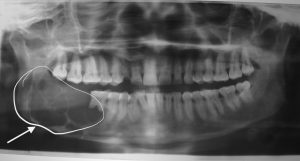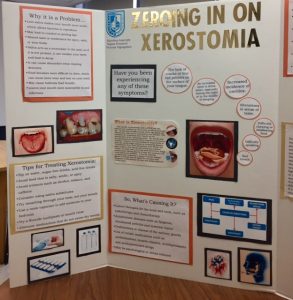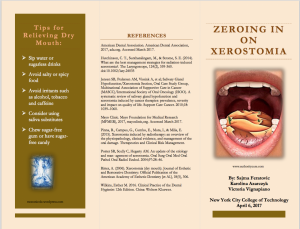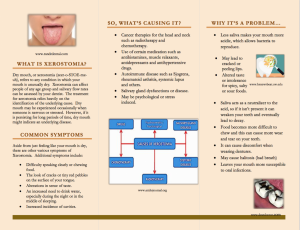Principles of Dental Hygiene Care II Course
Article Critique- The purpose of this paper was to prepare us how to properly read and analyze published research articles from revered medical and scientific journals. We had to find a peer reviewed research article and analyze the contents of it. The significance of this assignment was to improve our knowledge of interpreting studies, as well as being able to assess evidence based material and implement it into our future treatment plans for patients.
Oral Pathology Research
For this course we were assigned at random a topic in oral pathology. We had to discuss etiology, clinical appearance, demographics, histology, treatment options and the significance of understanding the condition as a dental hygienist. I was assigned the topic of Odontogenic Myxoma which is a benign intraosseous neoplasm originating from mesenchymal tissue, that predominantly affects the mandible. It is an uncommon locally aggressive condition and is usually found in relation to a premolar, molar or the mandibular posterior 3rd molar ramus area. Since this condition is an invasive tumor it is critical as dental hygienists that we are able to properly identify and refer this patient for proper treatment. We want to take all preventable measures and catch it ahead of time if we notice symptoms of its presence or recurrence. This is why it is crucial that we do an extensive extra oral and intra oral evaluation on our patients. We want to make sure we don’t miss anything which also includes the importance of taking proper diagnostic radiographs.
 NYC College of Technology Health Awareness Fair
NYC College of Technology Health Awareness Fair
Our “Zeroing in on Xerostomia Presentation” was a very informative topic we selected to do for the school Health Awareness Fair. Xerostomia is a very common condition many patients are faced with today and they may not even know it. More importantly, patients aren’t aware of what may be causing it! This presentation gave us the opportunity to educate individuals on the importance of saliva when it comes to oral health, how to assess for xerostomia and the many different factors that may lead to having xerostomia, such as use of specific medications. As hygienists, we develop long term relationships with our patients and we get to see changes that occur in their health overall not just orally. We are usually first in line to be able to spot differences in a patients oral health and this is why it is important for us to perform proper assessments on all of our patients and this includes obtaining a comprehensive medical history so that we could get a full understanding of the possible underlying causes of a patient with xerostomia.
Histology & Embryology Research
A mucocele is a benign cystic lesion of the minor salivary gland, composed of pooled mucus, that escapes into the oral tissue from excretory ducts. It usually centers on a small salivary gland that has been severed or blocked off due to trauma, on the lower lip. Mucocele’s are relatively painless and harmless cysts. Although mucocele’s normally won’t cause any discomfort in terms of pain or severe oral health complications, identifying it properly is important as a dental hygienist. Any intraoral swellings that are identified in our patients should have radiographs taken immediately for precaution purposes and to rule out any other possible conditions or anomalies. Aside from identifying it properly, we need to be able to educate the patient on sources that can cause this type of trauma such as braces, partial dentures, piercings, lip biting and malocclusion.
Public Health site visit presentation and report
Below is our hand washing presentation we developed and presented to the children of The Amity School in Brooklyn, NY. We decided to make it a fun interactive presentation so that the students could retain the information in the future. The image below is the game board I developed for the students to play at the end of the program. It was a reinforcement game that proved to be successful and entertaining for the children. Children normally learn best with a tell-show-do approach and this is why we decided to incorporate animations, images, sound effects and hands on models when visiting the school. After our site visit, we composed a paper to record our findings and to discuss the details of our dental hygiene process of care for this specific group of students.






